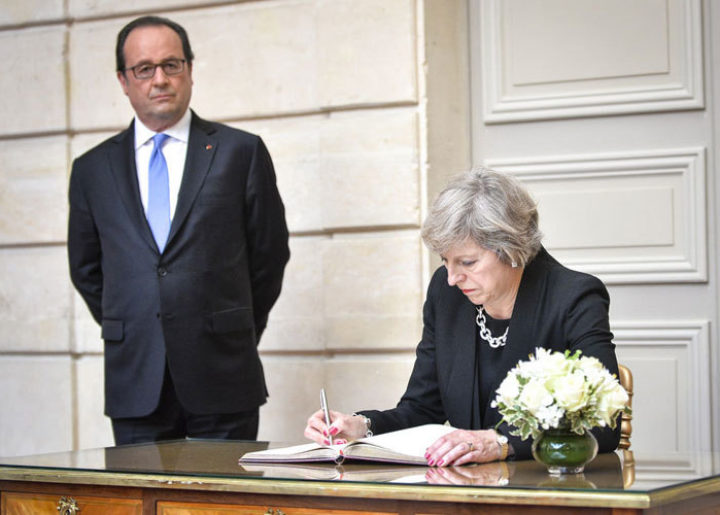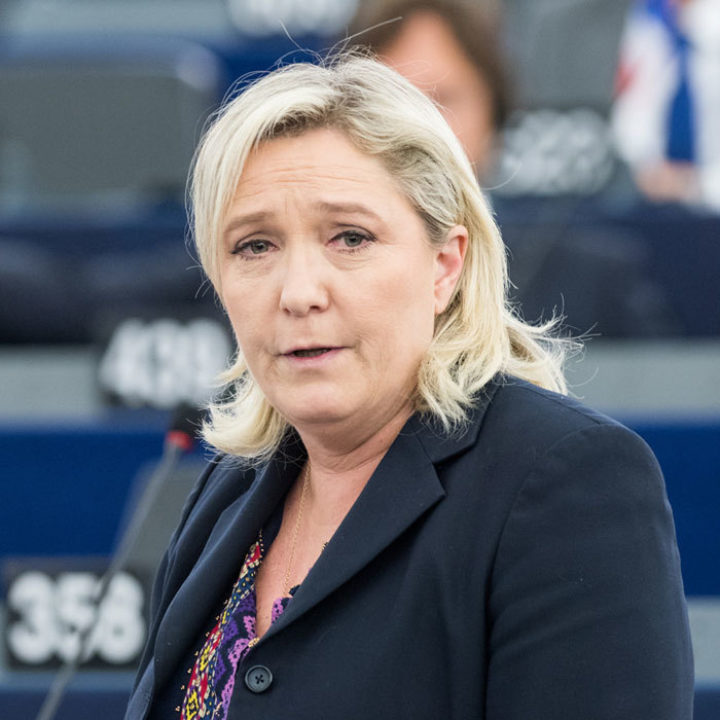Hinkley: Why not wait and C?
There's a strong case for delaying the final decision over the Hinkley C nuclear power station a little longer
By Richard Black
Share
Last updated:
Prime Minister Theresa May’s eleventh-hour decision to review plans for the much-delayed nuclear power station at Hinkley Point sparked anger in some circles.
Local Conservative MP Ben Howlett said it risked giving a ‘bad impression’ of Britain as a business destination. Chinese partners in the project were reported to be ’really questioning what’s going on’ and have since been making stronger noises about, basically, not doubting their integrity; while Justin Bowden of the GMB union won Soundbite of the Day on Friday by describing the decision as ‘bewildering and bonkers’.

There is, though, another, diametrically opposed question to be asked about the timescale for making a decision on the Hinkley C European Pressurised Reactors (EPRs): Why delay only until September? Why not longer?
Lest we forget, EDF originally expected to make a ‘final’ decision by the end of 2012. Then it was the end of 2013, then July 2014, then March 2015, then May 2016. That last-named plan was deferred in April, with the company promising a decision in September.
So EDF hasn't always been in a hurry. In fact, bringing its Final Investment Decision date forward to July must be the only time in the project's history that something’s been done ahead of schedule. It carried a strong whiff of EDF trying to bounce the new British government into making a hasty decision.
The logical conclusion must be that the French government, which owns 85% of EDF, was trying to get the deal done as far in advance as possible of its own national elections. With French unions already highly restive and opposed to Hinkley, defusing this nuclear bombshell as soon as possible would be a smart strategy.

So, Mrs May’s decision not to run with EDF’s timetable is eminently reasonable. The episode was, either by accident or design, a negotiating triumph for the Prime Minister and her office’s lack of leakery – hold your cards close, get the opposition to commit, then take your own time. The tables have turned, and it’s no longer Britain over a barrel of prime Somerset pork.
So I’ll come back to the question I asked earlier: Why not delay beyond September?
Brexit, Hollande, carbon steel... joining the dots
There are three target dates that make a lot more sense.
1. DECEMBER 2016
Before the end of the year, the government must prepare a Carbon Plan (aka Emission Reduction Plan) outlining in broad terms how it will meet the target for carbon emissions set for the period 2028-2032 (the Fifth Carbon Budget). Given that even at its most optimistic projection, Hinkley C would come online only three years before this period begins, it would seem eminently sensible to fold the two processes together, and deal with Hinkley as part of the overall Carbon Plan.
As a bonus, the French nuclear safety regulator should by December have given its final judgement on steel flaws found in the reactor pressure vessel on the EPR being built at Flamanville in France – a decision that could have major implications for the EPR programme and for EDF’s finances.
2. JUNE 2017
Although ministers continually refer to Hinkley as producing ‘reliable’ electricity, the fact is we have no idea how reliable it might be, because no EPR is yet operating, anywhere. The first, Taishan 1 in China, is due to begin operating in the first half of 2017. So, why not wait until 30th June and see how it fares?
By then, we will also know the identity of the next French President. If it’s Marine le Pen – the one candidate certain to be on the ballot – well, she’s not keen on Hinkley. She wants EDF to concentrate on getting Flamanville right, refurbishing France’s ageing reactor fleet and developing renewables. So, a le Pen administration could anyway cancel Hinkley.
3. DECEMBER 2018
By then, the two EPRs being built in Europe, Olkiluoto in Finland and Flamanville, are due to be in operation. The possible legal challenges against Hinkley could be concluded or abandoned. And we’ll have a better idea of EDF’s long-term solvency. Oh, and the UK could be out of the EU, with a picture of geopolitics and trade that’s impossible to see from here.
Winners and losers
So that's the case for delaying beyond this September. There is a case against, of course, and it hinges on five potentially negative effects.
1. RELATIONS WITH FRANCE
As noted above, EDF/France initially promised a decision three and half years ago. They have no cause for complaint.
In any case, what does the new realpolitik of Brexit imply about how Britain should deal with France? Not as a supplicant, presumably. France and EDF need this deal a lot more than the UK does; so holding back could be a good strategy during Brexit negotiations.
In fact, in a post-referendum world, isn't there something a bit odd about a deal that would basically transfer up to £1bn per year from UK energy bills to the French government?
Meanwhile, EDF shareholders (other than the French government) would presumably be delighted, given that the share price jumped by nearly 10% after Mrs May's announcement.

2. RELATIONS WITH CHINA
This is harder to read. Dealing with just the nuclear issues first: China is funding Hinkley as part of a package deal that would one day see its own reactors built at Bradwell in Essex, a calling card for further sales in the West. However, it hasn’t yet submitted its reactor designs for UK safety assessment; and like any reactor builder, it must be surveying the OECD countries right now and asking ‘where’s the market?' So, losing Bradwell might provoke a big noise, but not really be such a big deal.
More generally, Chinese-UK trade is worth about £57bn per year – so China’s investment in Hinkley, £6bn spread over 10 years, amounts to just 1% of overall annual trade – not such a massive deal. China retains good trade relations with the US, most of the time, despite the fact that the US would absolutely not let Chinese interests lay a finger on its nuclear installations.
And let's not forget that just three years ago, following David Cameron's meeting with the Dalai Lama, relations were apparently so frosty that a state-run newspaper could describe Britain as 'an old European country suitable for travel and study abroad, with a few good football teams... highly replaceable in China's Europe diplomacy'. Yet a couple of years later, all was once again sweetness and light.
In other words... rhetoric isn't always a guide to the real sentiments beneath. Besides which, Mr Osborne was often criticised for an overly genuflectional approach to China - so wouldn't Mrs May gain some measure of approval for a more robust one?
3. THE SOMERSET ECONOMY
People employed by EDF or its sub-contractors, and those hoping to be, would be impacted by further delay - no doubt about it. The region is thirsty for investment; house prices have risen on the expectation of a go-ahead. But presumably a government that's pro-industrial strategy could come up with some kind of recompense.
4. ENERGY SECURITY
The simple reality is that there's no compelling energy security case for Hinkley.
Energy systems are changing fast, and will change a lot more during the 10+ years until completion.

As the National Infrastructure Commission, EnergyUK and the departing head of National Grid all said this year, the logical future for the UK power network lies in a low-carbon, flexible smart grid, taking advantage of innovation and falling renewables costs. That doesn't mean that you can't have baseload generation - but it does, I would have thought, put an extra premium on value for money.
You could certainly replace Hinkley's 3.2GW with a mixture of offshore wind, interconnection, demand-side response, and peaking gas-fired plants. Too much gas would compromise carbon targets, but a bit is quite OK.
In the meantime, the government could concentrate on no-regrets options - finding a new energy efficiency policy that works, beefing up the grid, implementing DSR. New wind farms and interconnectors will come online, and ministers can keep a watching eye on the price of storage.
One of the other posited nuclear projects – Moorside or Wylfa – may well overtake Hinkley in scheduling and undercut it in price - crikey, we might enter a brief era of effectively competitive tendering! If Mrs May needs to give Hinkley the green light in 2017 or 2018, she can; if not, walk away.
5. INVESTMENT IN THE UK
The rapid sequence of energy policy shifts since May 2015 has, in the words of the Energy and Climate Change Committee, 'spooked' UK energy investors. So it might be argued that further delay on Hinkley would spook them still further.
It might. However, Hinkley is no ordinary deal. The investment is already tied up. The counter-argument is that while many of those previous U-turns (such as scrapping Zero-Carbon Homes) were senseless, delaying Hinkley would be eminently pragmatic. It would also hint at a move back towards things that investors actually want to fund, such as renewables and storage.
Case made?
So there we are: the case for further delay. Sure, it won't be popular in all parts.
But, especially following the referendum result, the government has to prioritise what’s best for Britain - period. EDF and the French government haven’t covered themselves in glory over Hinkley C; the design is unproven, the company shaky, the case unclear. Wait and C could just be the pragmatic option.
Share